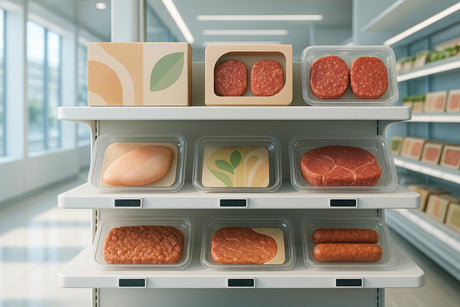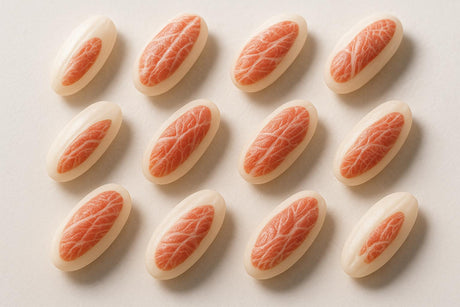In a world grappling with climate change, ethical concerns, and a growing demand for sustainable food sources, cellular agriculture and cultivated meat are emerging as revolutionary solutions. These innovative technologies promise to redefine how we produce and consume animal-based products, offering a glimpse into a future where delicious, nutrient-rich foods can be created without the environmental and ethical drawbacks of traditional farming.
This article delves deep into the concept of cellular agriculture, breaking down its process, implications, and potential to transform our food systems. Whether you’re an environmentally conscious consumer, a curious foodie, or a flexitarian exploring meat alternatives, this guide will provide valuable insights.
What is Cellular Agriculture?
At its core, cellular agriculture involves the production of animal products - such as meat, milk, and even leather - through laboratory techniques without the need to raise or slaughter animals. By sourcing animal cells and cultivating them in controlled environments, this approach allows for the creation of products that are biologically identical to traditional animal-derived goods.
Imagine eating a succulent steak or creamy yoghurt without it ever coming from a farm. Cellular agriculture makes this possible, combining cutting-edge fields such as biotechnology, tissue engineering, and molecular biology.
How Does It Work?
The process of producing cultivated meat, the most well-known application of cellular agriculture, can be broken down into four essential steps:
1. Cell Sourcing
Cells are the foundation of cultivated meat. Scientists begin by extracting a small sample of cells from a living animal through a harmless biopsy. These cells, often stem cells or muscle cells, serve as the starting point for creating meat. For instance, if you wanted cultivated chicken, cells would be sourced from a live chicken.
2. Cell Cultivation in Bioreactors
The extracted cells are then placed in bioreactors, which are highly controlled environments designed to support their growth. These bioreactors contain a nutrient-rich medium - the "food" that cells need to grow and multiply. This medium includes essential elements like proteins, carbohydrates, vitamins, and minerals, encouraging the cells to proliferate.
3. Tissue Structuring and Scaffolding (Optional for Complex Products)
To create more complex products, such as a steak or fillet, a 3D plant-based scaffold is often used. This scaffold gives structure to the cells, allowing them to grow in a shape that resembles traditional meat cuts. This stage is optional and primarily used for products requiring distinct textures and structures.
4. Maturation and Harvest
As cells grow and mature, they develop into fully formed tissues. Once the desired product is ready, it is harvested from the bioreactor. The result? A lab-grown product that looks, tastes, and is nutritionally similar to traditional meat, minus the environmental impact and ethical concerns.
Why Cellular Agriculture Matters
The importance of cellular agriculture extends far beyond its novelty. It holds the potential to address some of the most pressing challenges of our time:
1. Ethical Solutions to Animal Agriculture
One of the most significant advantages of cellular agriculture is its ability to reduce or eliminate the need to slaughter animals. By sourcing cells through harmless biopsies, this technology allows consumers to enjoy animal products without contributing to animal suffering.
2. Reduced Environmental Impact
Traditional animal farming is a major contributor to greenhouse gas emissions, deforestation, and water consumption. Cellular agriculture significantly reduces these environmental impacts. Cultivated meat requires far less land and water and produces fewer emissions, making it a sustainable alternative.
3. Food Security and Resilience
As the global population grows, traditional farming may struggle to meet food demand. Cellular agriculture offers a scalable solution that can produce high-quality protein without being constrained by land availability, climate change, or supply chain disruptions.
4. Customisation and Innovation
Cellular agriculture enables unparalleled customisation. For instance, food scientists can adjust the nutritional profile of cultivated meat, creating healthier versions with reduced fat or enhanced protein content.
Challenges to Adoption
While the promise of cellular agriculture is undeniable, several barriers currently limit its widespread adoption:
1. High Production Costs
The cost of producing cultivated meat is currently very high, making it inaccessible to most consumers. However, advancements in technology and scaling up production are expected to drive costs down over time.
2. Consumer Perception
One of the biggest hurdles is convincing consumers to accept lab-grown products. Many people are hesitant to try cultivated meat due to concerns about its taste, safety, or ethical validity. Education and transparency will be key to overcoming these perceptions.
3. Regulatory Hurdles
In many countries, including India and parts of Europe, cellular agriculture has not yet been fully regulated. Establishing clear guidelines for production, safety, and labelling will be critical for its commercialisation.
4. Limited Geographic Reach
Currently, cellular agriculture is primarily being developed and tested in countries like the United States and Singapore. Expanding this technology to other regions will require significant investment and infrastructure development.
Beyond Meat: Other Applications of Cellular Agriculture
Cellular agriculture isn’t limited to meat production. Its applications extend to other animal-derived products, including:
- Cultivated Milk: Producing milk without cows by growing mammary gland cells in a lab.
- Lab-Grown Leather: Creating leather without slaughtering animals for the fashion industry.
- Silk and Fur Alternatives: Developing animal-free materials for ethical fashion.
- Seafood: Cultivating fish and shellfish to address overfishing.
These innovations highlight the versatility of cellular agriculture, making it a promising technology for various industries.
Looking Ahead: The Future of Cellular Agriculture
Though still in its infancy, cellular agriculture has the potential to reshape global food systems. Overcoming current challenges - such as reducing costs and increasing consumer acceptance - will be critical to its success. As the world becomes more environmentally conscious and demands sustainable solutions, cultivated meat and other lab-grown products are poised to become mainstream.
In the near future, it’s likely that grocery store shelves will feature cultivated meats alongside traditional options. Ethical considerations, environmental benefits, and advancements in food technology make cellular agriculture a game-changer for the food industry.
Key Takeaways
- Cellular agriculture involves growing animal products in labs without raising or slaughtering animals.
- The process includes cell sourcing, cultivation, scaffolding (optional), maturation, and harvest.
- Key benefits include reduced environmental impact, ethical production, and food security.
- Current challenges include high costs, consumer acceptance, and regulatory hurdles.
- Applications extend beyond meat to include milk, leather, silk, and seafood.
- Cellular agriculture offers a path to a sustainable, ethical, and innovative food future.
By embracing these advancements, we can create a more responsible and sustainable approach to consumption, reducing our reliance on traditional farming while addressing global challenges. Cellular agriculture isn’t just a trend; it’s a transformative movement shaping the future of food.
Source: "What is Cellular Agriculture? Complete Explanation by Mahima Ma’am @FoodScienceAdda247" - Agriculture Adda247, YouTube, Aug 16, 2025 - https://www.youtube.com/watch?v=3f6KLHR_1kI
Use: Embedded for reference. Brief quotes used for commentary/review.













